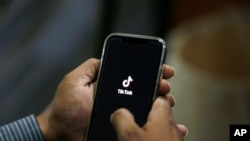TikTok announced on Thursday additional restrictions for teenagers, its audience of choice, to better protect them against dangers related to social networks such as bullying or lack of sleep.
"We think it is important to be even more proactive to ensure the safety of adolescents," said the platform, which has built its success in particular thanks to the enthusiasm of young users for its format of short and rhythmic videos.
Direct messaging will be disabled by default for 16- and 17-year-olds.
Teens in general will be encouraged to pay more attention to who can see the videos they upload. Those under 16, in particular, will be forced to choose among their subscribers, their friends or no one.
And some options will be disabled, like "Stitch" and "Duet"; the latter allows you to take a video and shoot another in parallel to broadcast both at the same time. Some users do it to value other users, but some do it to denigrate them.
In addition, 13-to-15-year-olds will no longer receive notifications after 9 p.m., nor 16- and 17-year-olds after 10 p.m., to promote more restful nights.
Despite strict rules against all content that sexualizes or exploits children, networks popular with young people are regularly criticized for not sufficiently protecting children from online predators.
They therefore seek to protect themselves from possible scandals without repelling their audience.
Google and Facebook regularly update their regulations concerning adolescents. Since Tuesday, on the ultra-popular YouTube (Google), videos uploaded by 13-to-17-year-olds are by default in "private" mode.
TikTok became the world's most downloaded mobile application in 2020, ahead of Facebook and its messengers, a sign that the pandemic has amplified the success of the lightweight video platform beyond its initial audience.









